
Title: Stiffness of Orthopedic Implants for Various Lattice Types
Speaker Presentation
Ms. Jasmine Barnych
Intern at Advanced Engineering Solutions, USA
Abstract
Lattice structures have been used for a long time by nature. The Additive Manufacturing (AM) industry continues to grow with new machines, faster processes, and a large selection of materials. The advancements in AM and the new CAD capabilities enable the design of orthopedic implants that facilitate osseointegration. Porous lattice structures are increasingly used for tissue and implants but require precise structural characteristics such as stiffness, porosity, volume fraction, and surface area. The challenges are to select the right lattice unit cell and to optimize the stiffness of the implant to match in-vivo conditions. This optimization will reduce stress shielding and avoid bone fractures at the bone and implant interface.
In this presentation, the process to compute the axial and torsional stiffness of biocompatible cylindrical implants will be presented. The stiffness versus porosity of various lattice cells such as Gyroids, Diamonds, IWP, auxetic beams, etc. will be presented.
Biography
Jasmine Barnych is an undergraduate student at Florida State University and Intern at Advanced Engineering Solutions. She has experience in printing implant samples for osseointegration research at Colorado State University.

Title: 3D Printed graded scaffolds for the bone tissue engineering: a promising approach
Plenary Presentation
Prof. Ilaria Cacciotti
University of Rome Niccolò Cusano, Italy
Abstract
In the tissue engineering, the scaffold (support for the cells deposition, adhesion, proliferation, differentaition) plays a pivotal role, together with the involved cells and biomolecules [Chronopoulou et al., 2020]. The design of an appropriate scaffold is very challenging, requiring the satisfaction of several concomitants aspects, in terms of microstructure, composition, mechanical , surface and biological properties [Cacciotti et al., 2018]. Very recently, the production of graded polymeric scaffolds by additive manufacturing has attracted a lot of interest. Different additive manufacturing technologies can be considered and the related process parameters have to be optimized [Di Piazza et al., 2021]. Moreover, different deposition patterns can be tested in order to identify the optimal one from a mechanical point of view. Considering the lack of osteointegration in the case of polymeric implants, as well as the possible induction of inflammations and infections, specific surface functionalisations can be proposed, such as the coating with hydroxyapatite, the inorganic component of the bone extracellular matrix [Cacciotti, 2019], and the loading with selected antinflammatory agents.
Biography
Ilaria Cacciotti is Full Professor of Biomaterials & Tissue Engineering and Materials Science & Technology at University of Rome "Niccolò Cusano". She graduated in Medical Engineering at the University of Rome “Tor Vergata” (Master of Science Award ‘Fondazione Raeli’), completed the Ph.D in Materials Engineering (Ph.D Thesis Award ‘Marco Ramoni 2011, Ph.D Thesis AIMAT Award 2012) and obtained the II Level Master degrees in “Forensic Genetics” and in "Protection against CBRNe events". She is expert in the synthesis/processing/characterisation of biocompatible nanostructured materials, particularly for applications in the biomedical/environmental/agri-food sectors. She is member of the Editorial Board of several international journals, including Applied Science-MDPI, Applied Surface Science Advances-Elsevier, Frontiers in Biomaterials, Open Journal of Materials Science- Bentham Science. For her research activity, she received more than 20 awards, including the L’ORÉAL-UNESCO Italy for Women and Science 2011

Title: The Design of Lightweight Structures for Additive Manufacturing
Keynote Presentation
Dr. Ioannis Ntintakis
Hellenic Mediterranean University, Greece
Abstract
Will be updated soon…
Biography
Ioannis Ntintakis is Lecturer of the Mechanical Engineering Department, Faculty of Engineering, of the Hellenic Mediterranean University since January 2019. From September 2010 until January 2019 he was a member of the Wood and Furniture Design & Technology Department of Technological Education Institute of Thessaly on the position of Lecturer. Ioannis Ntintakis awarded the title of Industrial Design Engineer at Technological Education Institute of West Macedonia in 2001. He holds a master’s degree (MSc) in Advanced Manufacturing Systems from Kingston University (UK) in 2006. He is a Ph.D. candidate at the Technical University of Crete, School of Production Engineering and Management, his doctoral thesis is titled ‘Topology optimization for Additive Manufacturing’. He teaches in undergraduate and postgraduate studies in the Department of Mechanical Engineering and in the Department of Wood and Furniture Design & Technology. He is a co-author in two technical books, and he is an author of seventeen articles in journals with judges. From 2001 to 2010 he has professional experience in the R&D departments of several Greek industrial enterprises. His current main research interests are additive manufacturing, lightweight structures, topology optimization, homogenization, industrial design, and CAD / CAM.
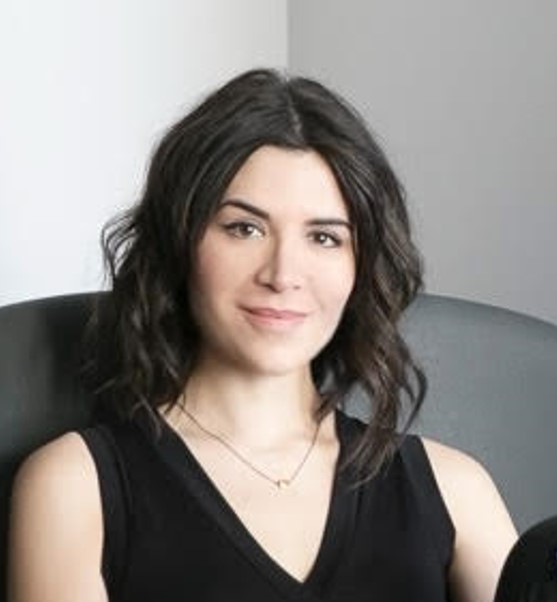
Title: Enabling Complex AM Geometries Through Implicit Modeling
Speaker Presentation
Ms. Erica Vlahinos
Strategic Account Manager, nTopology, USA
Abstract
Soap bubbles, catenoidal soap-film surfaces, gyroids in butterfly wings, and Nautilus sea shells are some examples of complex but effective geometries in nature. These complex geometries are minimal surfaces. In the early seventies, mathematicians discovered the mathematical expressions of minimal surfaces. These surfaces were not used in product design since we couldn’t generate these designs in CAD and we couldn’t manufacture them. The recent advances in AM and Implicit geometric modeling enable engineers to accelerate the pace of innovation by giving them the ability to design and manufacture these amazing geometries. In this presentation, there will be a brief introduction to implicit modeling and several examples of high-performance, innovative designs will be demonstrated.
Biography
Erica Vlahinos is a Strategic Account Manager at nTopology, partnering with fortune 500 companies to accelerate innovation and generate high performance products through additive manufacturing. Vlahinos specializes in DfAM software and additive implementation strategies.
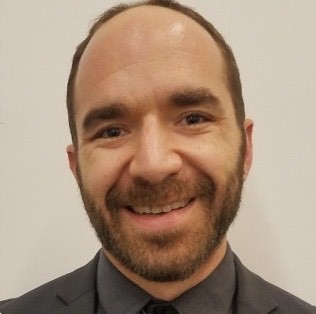
Title: Automating Design Exploration for Implicit Geometries
Speaker Presentation
Mr. Maiki Vlahinos
Staff Solutions Engineer, nTop, USA
Abstract
The progress in Additive Manufacturing and geometric implicit modelers enables engineers to generate complex lattice structures which can achieve higher performance. The analysis and interoperability of such complex models can be a challenge. This presentation will demonstrate techniques to overcome these challenges and a method to automate design exploration so we can make an informed decision earlier in the design process. Pressure drop is a crucial performance requirement in many applications and is the primary characteristic targeted in the aforementioned design study. Furthermore, this presentation will show some of the results but more importantly how engineers can develop and perform their own design exploration studies.
Biography
Maiki Vlahinos is a Staff Solutions Engineer at nTop. His primary focus is solving new unique and difficult problems in the Aerospace and Defense Industries. Vlahinos has nearly 15 years of CAE expertise in CAD, FEA CFD, and design Optimization. Most recently, his focus has been on innovative design efforts for heat exchangers and fluid domain topologies utilizing CFD Simulation Results before any geometry has been built or generated.
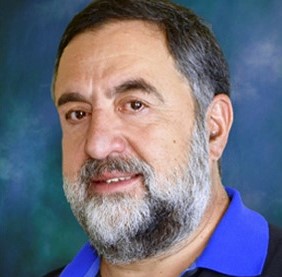
Title: Lightweighting Innovations with Generative Design and Lattice Structures
Keynote Presentation
Dr. Andreas Vlahinos
CTO of Advanced Engineering Solutions, USA
Abstract
Over the last century engineering schools teach design for subtractive manufacturing. This design inertia prohibits designers to generate high-performance designs when Additive Manufacturing is appropriate. Design practitioners are now enabled to unleash the full potential of AM with the use of Generative Design and Lattice structures within the CAD environment.
This presentation will provide an overview of the latest Generative Design and Lattice generation tools. In addition, this presentation will describe a workflow that utilizes the combination of Generative Design and Simulation-Driven Lattice Structures for High-Performance AM Designs. The process will be demonstrated with examples from the Aerospace, Defense, and Medical industries.
The workflow steps are: First the Generative Design spawns optimal feasible design from a set of performance requirements, design rules, and manufacturing constraints. The Generative Design uses a set of homogenized material properties generated from the intended lattice unit cell. Second, an automatic process generates a CAD model from the Generative Design results. Third, using the Generative Design CAD geometry and all the load cases a simulation is performed, and the stress results are exported in a three-dimensional field format. Finally, the Generative Design geometry is infilled with a Lattice Structure. The size or density of the lattice structure is driven by the simulation results of the third step.
Biography
Dr. Andreas Vlahinos is the CTO of Advanced Engineering Solutions. Andreas has concentrated on DfAM, Computer Aided Innovation, Generative Design, Lattice Structures, and Simple Solutions to Complex Problems. He has been instrumental in rapid product development through the implementation of Computer Aided Engineering for several Government agencies such as NASA, NREL, SANDIA, DOE, NCDMM, and US Army Aviation & Missile Command and several industry partners such as SpaceX, Lockheed Martin, General Dynamics, United Launch Alliance, Rafael Defense Systems, NAVISTAR Defense, etc. He has been a Professor of structural engineering at the University of Colorado. Several times he received the Professor of the Year Award. He has received the R&D 100 award and several patents. He received his Ph.D. in Engineering Science and Mechanics from the Georgia Institute of Technology. Finally, he is regularly invited as a keynote speaker and panelist on a variety of subjects (Generative Design, Innovation, DfAM, IoT) at international conferences.

Title: Heat Exchangers with Hilbert Filling Topologies
Speaker Presentation
Mr. Erik Anstine
Software engineer, Advanced Engineering Solutions, USA
Abstract
The additive manufacturing industry continues to grow with new machines, faster processes, and a large selection of materials. Design practitioners are now enabled to unleash the full potential of AM with the use of Generative Design and Lattice structures to generate complex geometries for heat exchangers.
For example, when a volume is infilled with minimal surfaces, is subdivided into separate continuous volumes that are intermingled. This property makes minimal surface geometries ideal for heat exchangers and works well for heat exchangers with approximately the same flow rate for both fluid domains. When the flow rate between the two fluid domains is drastically different a new type of topology is necessary. In this presentation, a Heat Exchanger with Hilbert Filling Topology is presented.
Python code is used to generate the array of Hilbert curve key points. The points array is imported into the CAD system and the heat exchanger tubing is generated. The internal supports are avoided by selecting a diamond cross-section. The external support plates are generated with teardrop cutouts to reduce weight. In order to explore the effectiveness of the design, a conjugate heat transfer simulation is performed and presented.
Biography
Erik Anstine is an Opera Singer and a software engineer. Erik’s mission is to empower innovators by delivering robust software to fulfill the innovator’s performance requirements.
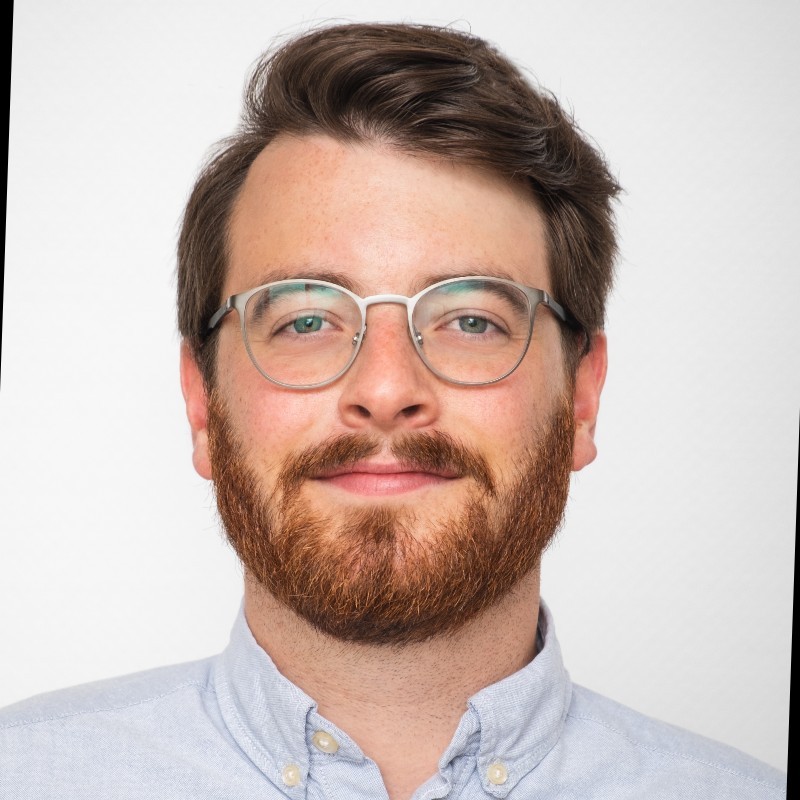
Title: Additive Manufacturing of Electronics - The Inkjet Way
Speaker Presentation
Mr. Maximilian Mosberg
Notion Systems GmbHGermany
Abstract
Inkjet printing of functional materials makes it possible to manufacture electronics in a more economical way in comparison to traditional methods. Commonly, electronics are manufactured by means of lithographic processes which are based on a cycle of extensive functional material application onto a substrate and stripping away unwanted material downstream in the manufacturing process by means of etching. Traditionally the design of the electronics is exposed on to the functional element by use of prefabricated masks or screens which must be adapted to every design change, which reduces the turnaround of manufacturing varying products.
In comparison, inkjet places functional material directly according to the final design without needing to rely on prefabricated tooling. This drastically reduces the resource consumption of electronics manufacturing by cutting the cost of material and energy and simultaneously drives flexibility in manufacturing as a change of electronics design is realized fully digitally. Inkjet printing is a contactless manufacturing technology that allows the pico-liter sized deposition of functional materials with predefined chemical, mechanical, optical, dielectric, conductive or adhesive properties with resolutions of up to the submicron level. Due to the contactless nature of inkjet printing it can be used to deposit functional material on top of 3D topology such as in the case of printing solder mask on top of copper traces in the use case of PCB manufacturing. Inkjet can be used to produce electronics displays, printed circuit boards, semiconductor components, as well as high precision optical 3D parts.
Biography
Max Mosberg studied mechanical engineering at the Karlsruhe Institute of Germany where he focused on additive manufacturing of polymers for use in the biomedical and automotive industry. After completing his thesis on the simulation of SLS process parameters for the manufacturing of PA6 components, he was the program manager of the SME focused research group Additive Manufacturing Surface Manipulation in Germany. Currently he works in the business development and sales team at Notion Systems, a supplier of industrial inkjet printing systems for the manufacturing of electronic displays, printed circuit boards, semiconductor components, as well as high precision optical 3D parts.
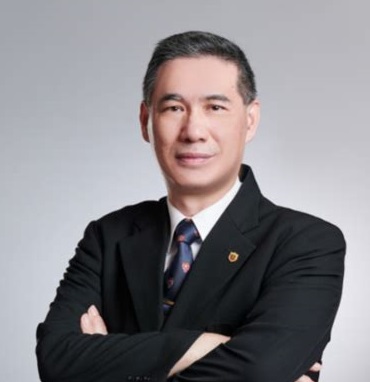
Title: An Innovative Bio-functional Composite Hydrogel with Enhanced Printability, Rheological Properties, and Structural Integrity for Cell Scaffold Applications
Plenary Presentation
Prof. Dr. Yung-Kang Shen
Taipei Medical University, Taiwan
Abstract
The present study was conducted to manipulate various biomaterials to find potential hydrogel formulations through three-dimensional (3D) bioprinting fabrication for tissue repair, reconstruction, or regeneration. The hydrogels were prepared using sodium alginate and gelatin combined with different concentrations of Pluronic F127 (6% (3 g), 8% (4 g), and 10% (5 g)) and were marked as AGF-6%, AGF-8%, and AGF-10%, respectively. The properties of the hydrogels were investigated using a contact angle goniometer, rheometer, and 3D bioprinter. In addition, the osteoblast-like cell line (MG-63) was used to evaluate the cell viability including hydrogels before and after 3D bioprinting. It was found that the ratio of contact angle was lowest at AGF-6%, and the rheological results were higher for all samples of AGF-6%, AGF-8%, and AGF-10% compared with the control sample. The printability indicated that the AGF-6% hydro-gel possessed great potential in creating a cell scaffold with shape integrity. Moreover, the live/dead assay also presented the highest numbers of live cells before printing compared with after printing. However, the number of live cells on day 7 was higher than on day 1 before and after printing (**p < 0.01). Therefore, the combination of AGF-6% could be developed as a bio-functional hydrogel formulation for potential tissue regeneration applications.
Keywords: biopolymer; hydrogels; printability; cell scaffold; tissue regeneration
Biography
Professor Yung-Kang Shen received his Ph.D. degree from the National Taiwan University, Taipei, Taiwan, in 1995. He has been a Professor of the School of Dental Technology at Taipei Medical University (TMU) since 2014. He has been a Chairman of the School of Dental Technology of TMU since 2018. He is also the Director of Bio-Medical Nano/Micro Forming Lab of TMU, the Researcher of Nano Tissue Engineering and Image Research Center of Taipei Medical University Hospital (TMUH), the Researcher of Sleep Research Center of Taipei Medical University Hospital (TMUH), the Researcher of the Department of Otolaryngology of Taiwan Adventist Hospital (TAH). He is the Chairman of Taiwan Oral Biomedical Engineering Association, Co-Organizing Directors for Asia Pacific Society for Materials Research (APSMR), Co-Organizing Directors for Asia Pacific Society for Biology and Medical Sciences (APSBMS), the Supervisor of SME Taipei Chapter and the Director of Taiwan Society for Abrasive Technology. He is an Adjunct Professor of University Airlangga (Indonesia) since 2022. He is an Adjunct Professor of University Hasanuddin (Indonesia) since 2020. He is a Guest Professor of Zhejiang University of Technology (China) since 2017. He is a Part-time Professor of ShanDong University (China) since 2016. He is a Visiting Professor of Changchun University of Science and Technology (China) since 2012. Professor Shen is a project review committee member of the National Science and Technology Council (Taiwan). His research includes digital dentistry, metamaterial, scaffold fabrication (PCL/graphene), 3D/4D/5D printing, biomedical nano/micro forming technology, medical bionics design and manufacturing, animal model for medicine therapy. Now, he has published more than 140 journal papers and 120 conference papers. Professor Shen has served as the Plenary Speaker or keynote speaker at more than 30 international seminars. Professor Shen was awarded the Best Paper Award for the 3rd International Forum on Systems and Mechatronics in Singapore in 2010. He was also awarded the First Prize in Poster Presentation Award for the 2nd Research Week-International Symposium 2012 of COM on Dental Technology, Oral Health Care and Biomedical Device in Taipei in 2012. He was also awarded the Most Cited Article Award, 2012 to 2013 for "International Journal of Precision Engineering and Manufacturing" (SCI Journal). Professor Shen awarded the World’s Top 2% Scientists 2022-side by side of lifetime scientific influence (Stanford University). Professor Shen currently serves as the Editorial Board for Polymers (SCI Journal), Biology, Engineering and Medicine; Journal of Precision Medicine and Public Health; Open Access Journal of Science and Technology; International Open Access Journal of Translational Medicine and International Journal of Manufacturing Engineering.
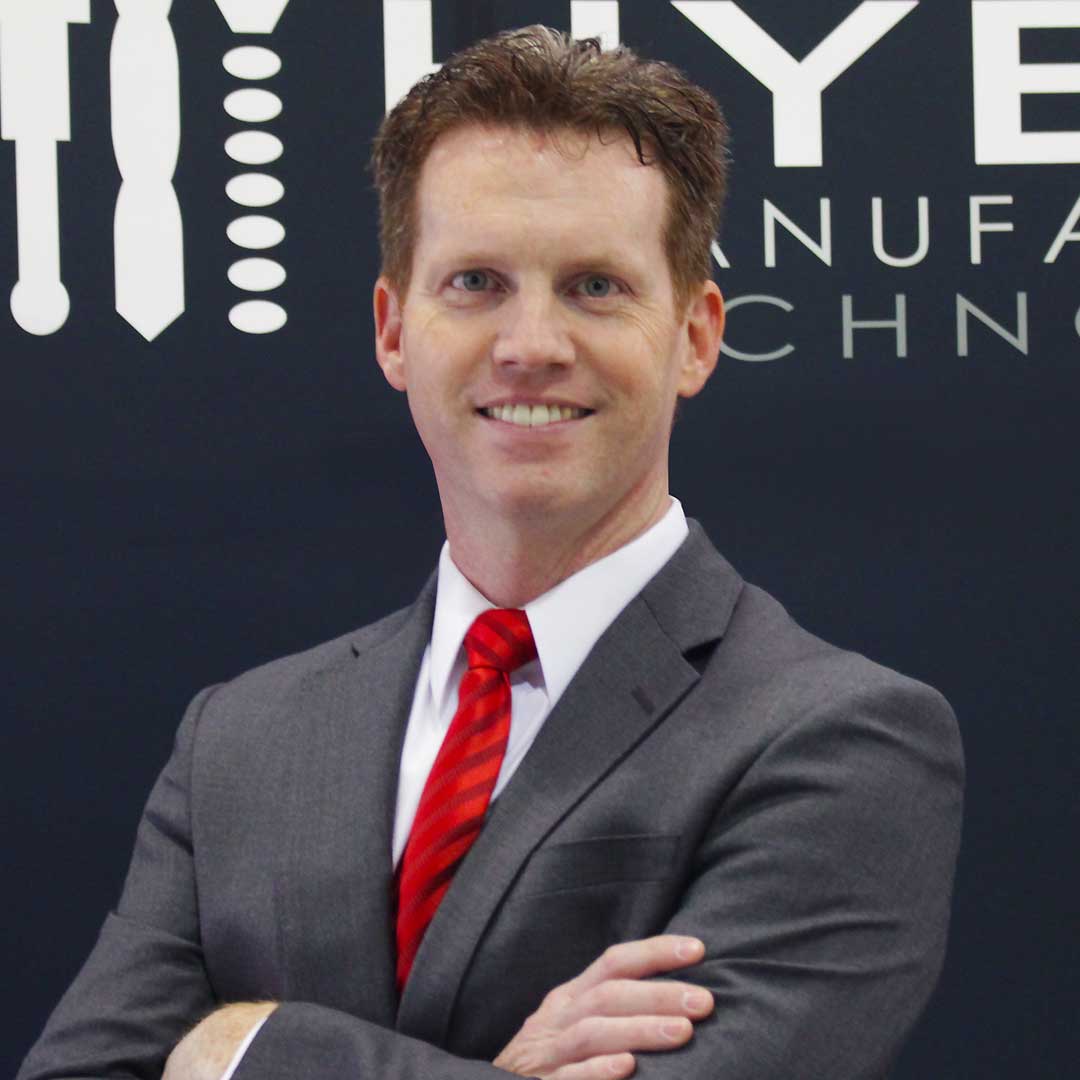
Title: Enabling Additive Manufacturing with Integrated Part Finishing via Hybridizing
Plenary Presentation
Dr. Jason Jones
Founder & CEO, Hybrid Manufacturing Technologies, USA
Abstract
Additive Manufacturing (AM) has garned significant attention in the recent decade, perhaps more than any other manufacturing technology in history. AM holds tremendous promise to affect change in many areas of industry, biology, and construction. However, to fully unlock this
potential, printed parts nearly always need to undergo post-print processing steps in order to become useful parts. For high density materials such as metal, these “post processing” steps can be as costly as the printing step. This non-trivial post processing activity can make or break the viability of the case to adopt, yet too often the cost of these steps are overlooked or underrepresented.
This presentation provides a framework for considering all of the steps for additive manufacturing of finished parts. It also reviews the state-of-the-art for integrating finishing with directed energy deposition and polymer composite extrusion. Specifically areas will be shown
when it is practical to co-locate part printing and finishing in a single setup. Viewers will also gain insight into the types of parts that can be commercially adopted using this approach and how automating the finishing processes helps quantify the costs of post processing and the
potential savings that can be achieved using a hybrid machine to bring them all together.
Biography
Dr. Jason Jones is the pioneer and world’s leading authority on hybrid manufacturing-integrating Additive Manufacturing (AM) with mainstream CNC machines. He is the co-founder and CEO of Hybrid Manufacturing Technologies,transforming CNCs & Robots into flexible smart factories with additive, subtractive, and inspection capabilities. Dr. Jones has a PhD in 3D printing from the University of Warwick and has led millions of dollars of AM development and commercialization. He is the author of numerous publications, a distinguished inventor holding dozens of patents, and was a founding member of the ASTM F42 standards committee for Additive Manufacturing.
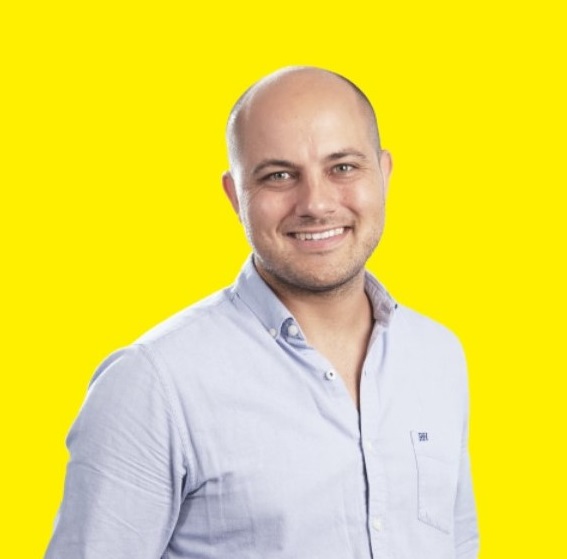
Title: Additive manufacturing as a game changer in the construction industry
Speaker Presentation
Mr. Victor Martinez Pacheco
3DCP & advanced materials researcher, Spain
Abstract
The construction industry is the sector with the most relevant potential change of the decade. Additive manufacturing is the technology that will allow a game changer in the way we conceive construction processes. Is 3d printing viable in construction? Is the market ready? Is the technology ready?
Biography
Victor Martinez Pacheco. Architect, PhD Candidate in Civil Engineering, MsC Advanced Architecture, head of the 3DLAB of the R&D department of Cementos La Cruz, lecturer on innovation in construction.
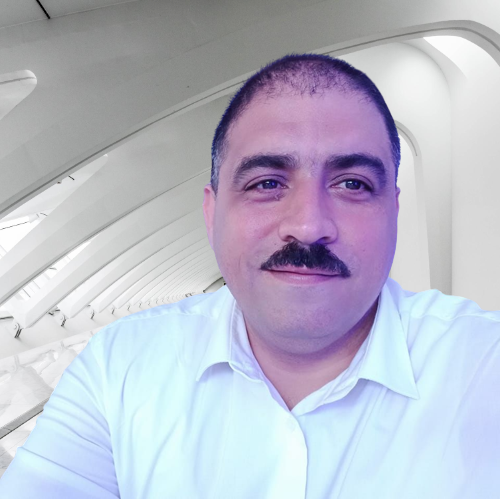
Title: Effectiveness of Laser Shock Peening in Post-processing Additive Manufactured metal components
Speaker Presentation
Dr. Mounir Frija
Senior lecturer at University of Sousse, Tunisia
Abstract
Additive manufacturing (AM) has gained significant popularity in recent years for its ability to produce complex and customized metal components. However, the inherent characteristics of AM, such as porosity and residual stress, can compromise the mechanical properties and performance of the fabricated parts. Laser shock peening (LSP) has emerged as a promising post-processing technique to enhance the structural integrity and fatigue resistance of AM components.
This work presents a comprehensive investigation into the effectiveness of LSP in improving the mechanical properties of AM metal components. The study involves the fabrication of Ti-6Al-4V alloy specimens using a selective laser melting (SLM) process, followed by LSP treatment under various process parameters. The microstructural changes, surface roughness, residual stress distribution, and mechanical properties of the LSP-treated specimens were systematically evaluated and compared with the as-fabricated counterparts.
The results demonstrate that LSP induces a significant reduction in surface roughness and an effective homogenization of the residual stress distribution within the AM components. Moreover, LSP treatment leads to an improvement in the microstructural properties, including grain refinement and reduced porosity. These enhancements result in enhanced mechanical properties, including increased fatigue life and improved tensile strength of the AM components.
Biography
Dr. Mounir FRIJA graduated in 2018 as a PhD-engineer in Mechanical Engineering from the National School of Engineers of Monastir. He works as a senior lecturer at the Higher Institute of Applied Sciences and Technology of Sousse – University of Sousse. He is a senior technical expert and consultant in Industry 4.0 with Novation 4.0 Center of Sousse-Tunisia. He is responsible for the INDUSTRY 4.0 training course at the virtual university of Tunis for the final Professional Master classes specialized in the Optimization and Modernization of Companies. His research focuses on metal additive manufacturing of medical implants and prostheses.
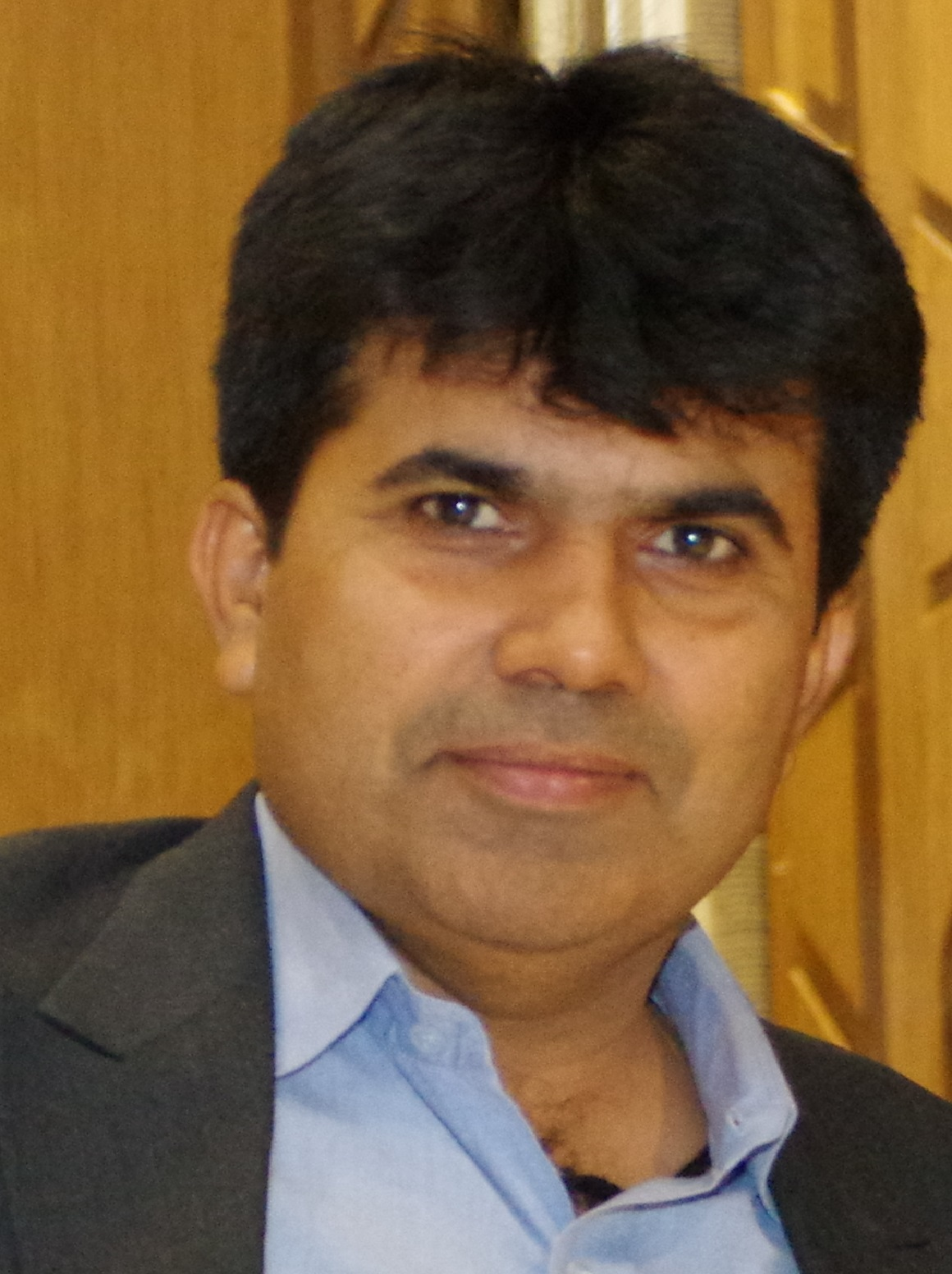
Title: High Performance Materials for 3D Printing
High Performance Materials for 3D Printing
Mr. Jaimin Zaveri
DGM Marketing & Application Development (Global Business)- Gharda Chemicals Ltd, India
Abstract
High performance polymers are the polymers which can sustain continuous high service temperatures under loads and provide best mechanical and frictional performance, good chemical resistance & low outgassing properties. PAEK and PEI are most popular high performance in the 3D printing segment and has great future due to its special advantages.
Fuel costs account for over 35% of airline’s general operating expenses. The only solution to bring down cost is to reduce the weight. This is possible by replacing the high weight metal parts with lightweight high performing plastics which has excellent out gassing properties, strength & heat resistance, resistance to fluids and chemicals, friction and wear resistance. PEKK, PAEK and PEI are the best choice of materials to meet this demand to replace many complex structural parts. Thanks to 3D /AM technology and innovative high performance polymers. which has made it possible to print such complex structural parts. It is acceptable by major OEMs.
3D Printing is most advance digital processing technology, it has opened up a door for many industry to think out of the box and solution for complex design parts with enhance performance demand in segments like Aerospace, Biomedical, Oil and Gas, Automotive and other industries. It is an opportunity for global engineering plastics raw materials players of PEKK, PAEK, PEI , PA11, PA12 to contribute to solve the change by material innovations. Gharda Chemicals is very active in PEK, PEKK material required for 3D printing /AM and coming up with PEI in future.
Materials like PEKK, PAEK can offer excellent layer adhesion, and excellent trans layer crystallization hence good strength, wider processing window, and smooth printability. In addition, these materials offer enhance performance in mechanical properties, thermal properties, chemical resistance, and compressive strength, wear resistance to replace metal with reduced weight with special compounds like PEKK CF, PEKK GF, and PEKK CNT. These polymers does have excellent radiation resistance, biomechanical properties, creep and fatigue as an added advantage.
Biography
Jaimin Zaveri obtained his graduation in Chemistry from Gujarat University, Ahmedabad. Then masters in Polymer Science from SP University, Gujarat. He has worked, starting from 1996 in Plastics Molding Firms and then from 2002 to 2016 worked for multinational raw material companies like INEOS ABS (INDIA) Ltd , Lanxess, Covestro( India) Pvt Ltd ( Formally Bayer Material Science Ltd, Bayer AG) & Covestro at Key Positions in marketing and technical Services. Success fully handled various engineering plastics like ABS, SAN, PC, PC/ABS, TPU, PA6, PA66, PBT, PETG. He has successfully contributed to create new applications in industry sectors like Automotive, Consumer Electronics, E&E, Constructions, Lighting, Mass transport, Textile from concept to commercialization of application. Wide exposure of Institutional sales and Industrial marketing, Specification of product at reputed OEMS and Institutes. He has created many national and international key visible special projects in different filed of plastics. He is now working with Gharda Chemicals Ltd as head of international marketing and application development for high temperature and super high performance materials like PEK, PEKK, PBI, PEI. Helping Gharda Chemicals for marketing and application development to expanding the market of super high performance polymers. He has been working on various application development and material developments/Technology development for Additive manufacturing novel high performance materials segment ( 3D printing) since last 6 years. Mr Jaimin Zaveri is management committee member of IPI .
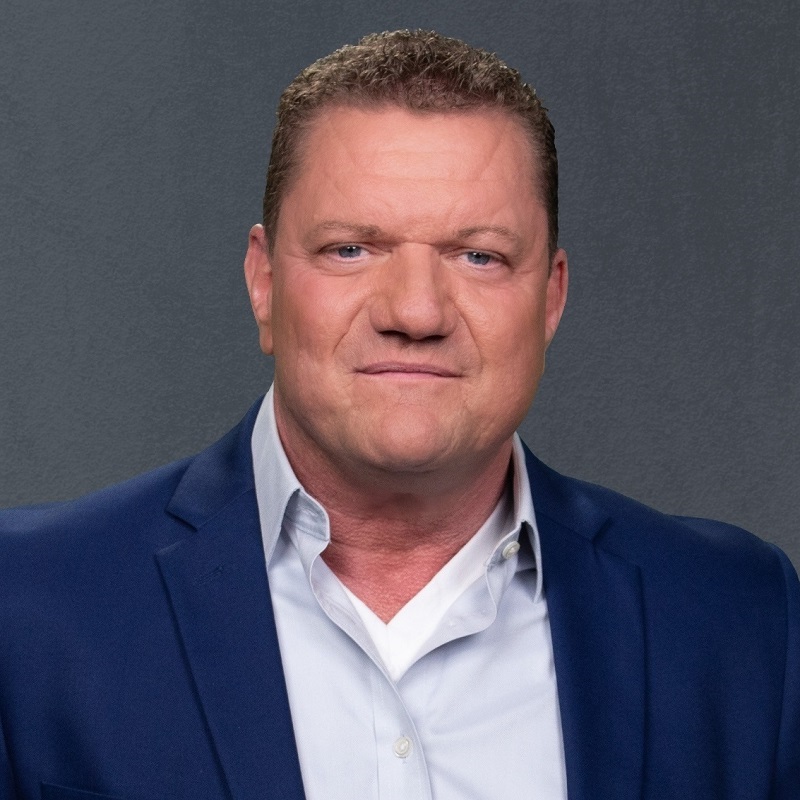
Title: Cold Spray Additive Manufacturing (Csam) Technology For Expeditionary Point-Of-Need Maintenance And Repair
Keynote Presentation
Mr. Chris Harris
Vice President of Defense of the Americas for SPEE3D, USA
Abstract
As the world of additive manufacturing continues to evolve, SPEE3D stands at the forefront of innovation with its groundbreaking Cold Spray Additive Manufacturing (CSAM) technology. In this keynote presentation, Chris Harris will delve into the particulars of this unique AM process, which strike a critical balance between speed, size, performance, and user safety. This informative presentation will highlight actual case studies that validate the versatility offered by SPEE3D's CSAM technology and the industry-wide benefits it offers to the global 3D printing industry. Additionally, we will discuss the key differentiators that make this solution ideal for expeditionary "point-of-need" commercial and defense applications, which allow end-users to maintain and repair vital equipment—whenever and wherever needed. Presenter: Chris Harris SPEE3D / VP of Defense, Americas.
Biography
Chris Harris serves as the Vice President of Defense of the Americas for SPEE3D, specializing in expeditionary point-of-need technology for military readiness. Harris has authored six books, including The Complete Idiot’s Guide to Self-Defense, licensed by one of the largest publishers in the world. For 25 years as a private contractor, he taught his personal brand of elite close-quarters combat training to more than 500 government agencies and private-sector organizations worldwide. He is a Business Executives for National Security (BENS) member and a US military veteran. As the author of Phase Selling for Additive Manufacturing, Harris has provided his proprietary sales performance training and consulting services to more than 200 AM companies from 60 countries. He is also a contributor to ALL3DP Magazine, where nearly three million monthly readers have access to his content. Harris has been inducted into the Martial Arts Hall of Fame and holds the rank of Grand Master. He currently serves on the US Ju-Jitsu Technical Committee and the US Taiho Jutsu Instructors Committee. As a recognized authority on adversity, resilience, and mindset and the author of I Go Thru, he is a sought-after keynote speaker and media guest. As an award-winning inventor, Harris has been granted multiple patents, including the first nonlethal control and restraint police baton.
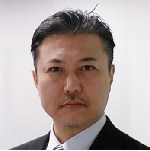
Title: Stereolithographic Additive Manufacturing for Practical Components with Functionally Geometric Structures
Keynote Presentation
Prof. Soshu Kirihara
Osaka University, Japan
Abstract
In stereolithographic additive manufacturing (STL-AM), 2-D cross sections were created through photo polymerization by UV laser drawing on spread resin paste including nanoparticles, and 3-D models were sterically printed by layer lamination. The lithography system has been developed to obtain bulky ceramic components with functional geometries. An automatic collimeter was newly equipped with the laser scanner to adjust the beam diameter. Fine or coarse beams could realize high resolution or wide area drawings, respectively. As the row material of the 3-D printing, nanometer sized metal and ceramic particles were dispersed into acrylic liquid resins at about 60 % in volume fraction. These materials were mixed and deformed to obtain thixotropic slurry. The resin paste was spread on a glass substrate with 50 μm in layer thickness by a mechanically moved knife edge. An ultraviolet laser beam of 355 nm in wavelength was adjusted to 50 μm in variable diameter and scanned on the spread resin surface. Irradiation power was automatically changed for an adequate solidification depth for layer bonding. The composite precursors including nanoparticles were dewaxed and sintered in the air atmosphere. In recent investigations, ultraviolet laser lithographic additive manufacturing (UVL-AM) was newly developed as a direct forming process of fine metal or ceramic components. As an additive manufacturing technique, 2-D cross sections were created through dewaxing and sintering by UV laser drawing, and 3-D components were sterically printed by layer laminations with interlayer joining. Through computer-aided smart manufacturing, design, and evaluation (Smart MADE), practical material components were fabricated to modulate energy and material transfers in potential fields between human societies and natural environments as active contributions to Sustainable Development Goals (SDGs).
Biography
Soshu Kirihara is a doctor of engineering and a professor of Joining and Welding Research Institute (JWRI), Osaka University, Japan. In his main investigation “Materials Tectonics as Sustainable Geoengineering” for environmental modifications and resource circulations, multi-dimensional structures were successfully fabricated to modulate energy and materials flows effectively. Ceramic and metal components were fabricated directly by smart additive manufacturing, design and evaluation (Smart MADE) using high power ultraviolet laser lithography. Original stereolithography systems were developed, and new start-up company “SK-Fine” was established through academic-industrial collaboration.
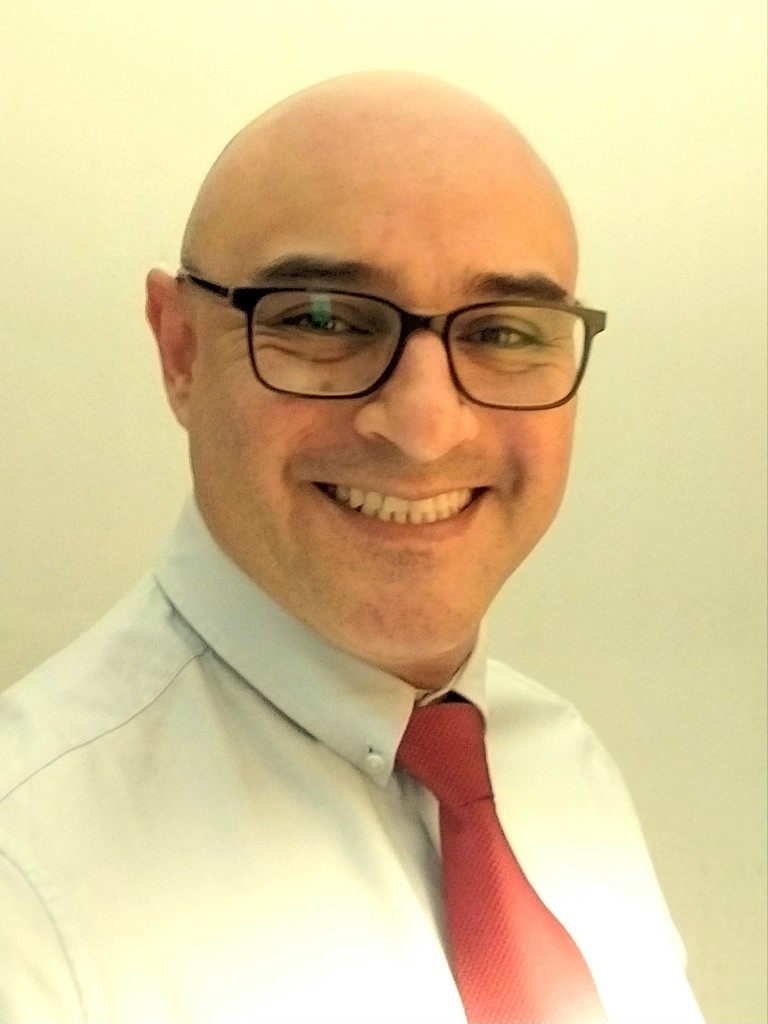
Title: Advancements and challenges in Additive Manufacturing of Magnesium Alloy Medical Implants
Advancements and challenges in Additive Manufacturing of Magnesium Alloy Medical Implants
Mr. José Alberto Bejarano Ulloa
Msc. Pontifical Catholic University of Peru, Peru
Abstract
This presentation focuses on the latest advancements in additive manufacturing techniques for the production of medical implants using magnesium alloys. Magnesium alloys have gained significant attention in the field of implant manufacturing due to their biocompatibility,
lightweight nature, and mechanical strength. However, there are challenges that need to be addressed to fully exploit their potential. The first trend discussed is topological optimization, where advanced algorithms are used to design complex implant structures that optimize load
distribution and minimize material usage. Integration into the design and manufacturing processes, as well as validation of optimized designs, present challenges in this area. The second trend focuses on enhancing the material properties of magnesium alloys. Precise control of
microstructure and composition is vital to improve mechanical strength, biocompatibility, and corrosion resistance. Achieving a balance between these properties while maintaining costeffective manufacturing techniques poses a challenge. Customized design and fabrication is
another important trend, allowing implants to be tailored to fit the unique anatomy of each patient. Optimization of the design process for customization, cost-effectiveness, and regulatory compliance presents challenges in this area. Lastly, the emerging trend of tissue and organ bioprinting using magnesium alloys opens new possibilities in regenerative medicine. Developing bioinks compatible with magnesium alloys and achieving precise bio-printing of complex structures are challenges to be overcome. Addressing these challenges will unlock the full
potential of magnesium alloys in medical implant manufacturing. By combining topological optimization, material enhancements, customized design, and tissue bio-printing, we can revolutionize the field, offering personalized implants with improved biocompatibility and
functionality.
Biography
Experienced Mechanical Engineer and Machine Design graduate with a passion for materials and welding engineering. Extensive academic and teaching experience in Colombia and Peru, specializing in industrial inspection, supervision, and consultancy. Continuously committed to professional development, participating in international projects such as Research 900 at the Canadian Center for Welding and Joining. Presented at various conferences and seminars in Brazil, Colombia, Peru, Mexico, the Netherlands, and India. Strong belief in the integration of theoretical advancements and practical industry application. Holds a Master's degree in Welding Engineering from the Pontifical Catholic University of Peru (PUCP) and certifications as an International Welding Engineer, European Welding Engineer, and International Coordinator in Metal Additive Manufacturing by the European Welding Federation.

Title: Processing of Nanocomposites and Parts Fabricated by Fused Filament Fabrication Additive Manufacturing for Engineering Applications
Speaker Presentation
Mr. Ozgur Uyar
GSI SLV-TR, Turkey
Abstract
Additive manufacturing is a production techniques which produce near net shape directly from the CAD model. Fused filament fabrication (FFF) can be classified as direct energy deposition additive manufacturing method which leads less material loss, design flexibility and less production cost. A filament with specific diameter is used in FFF methods, and a heat source is used to melt the filament material to produce desired shape layer by layer. In additive manufacturing technique metallic, ceramic, polymeric and composite materials can be used feedstock materials. In this work, using nanoparticles reinforcement thermoplastic matrix filament using is investigated. Poly lactic acid (PLA), polypropylene (PP), high density polyethylene (HDPE), low density polyethylene (LDPE) may be chosen as a polymeric matix. Carbon nanotubes and graphene can be used as nano size reinforcement material. Aim of reinforcement nano particle is optimizing or controlling mechanical properties of the material such as tensile strength, elastic modulus, and developed thermal, electrical properties. Fabrication nanoparticle reinforced polymeric filament is different than polymeric filament. Twin screw extruder is used in order to fabricate composite granules. Composites which leave from twin screw extruder is send hall-off unit and spooling device to fabricate nanocomposite filament with specific diameter. The filament is used to produce desired shaped object. Tensile strength, young’s modulus, stiffness may be measured by applying tensile test. In this work effect of graphene nanoparticles in PLA tried to be explained.
Biography
Özgür Uyar is a Welding Engineer at GSI SLV TR since 2020. He holds a bachelor's degree in Metallurgical and Materials Engineering from Middle East Technical University. With a focus on additive manufacturing of lattice structures as a mater thesis, Özgür actively contributes to research projects. In 2023, he earned the title of International Metal Additive Manufacturing Coordinator.
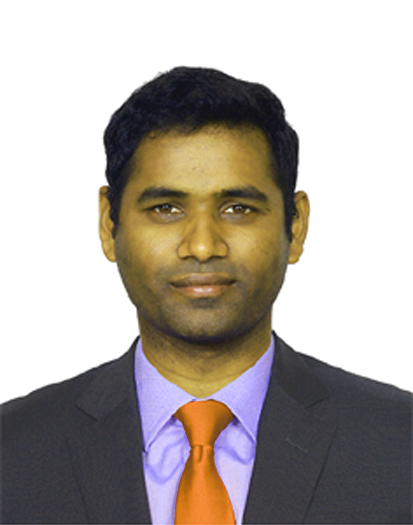
Title: Productivity in Wire Arc Additive Manufacturing
Keynote Presentation
Dr. Murali Mohan Cheepu
Research Manager, South Korea
Abstract
Wire Arc Additive Manufacturing (WAAM) is a prevalent 3D printing technology for the deposition of large-scale products with a high level of productivity. For metal-based additive manufacturing, directed energy techniques have gained popularity in recent years due to their ability to produce large parts quickly and at a lower cost than conventional manufacturing methods. Wire arc additive manufacturing employs a robotic arm and welding power sources to dissolve and fuse metal wires and deposit the layer via welding arc. WAAM is currently in a promising state, with ongoing research and development geared at enhancing the technology's capabilities and reducing costs. Various industries, including aerospace, automotive, and defense, have already utilized wire arc additive manufacturing to produce large components. In addition, it can utilize a range of metals, including steel, titanium, aluminum, and nickel alloys, making it adaptable for a variety of uses. The purpose of this presentation is to discuss methods for enhancing the WAAM's productivity, its achievements in manufacturing industries, and its future potential. It also includes experimental results regarding the titanium, aluminum, and nickel-based alloys used in the production of large-scale components and their respective productivity. Ongoing research and development efforts are concentrated on addressing the remaining obstacles and enhancing the capabilities of the technology.
Biography
Dr. Murali Mohan Cheepu is a research manager at STARWELDS Inc. He has over ten years of experience in the manufacturing and research industries. His research focuses on welding and joining, additive manufacturing, automation, digitalization and artificial intelligence. In addition, he is doing research on a novel Super-TIG welding process to increase productivity. Cheepu has won a number of awards, such as best researcher award from KWJS, trusted reviewer from the Institute of Physics in the UK, and outstanding young manufacturing engineer award from the SME, USA. He serves on the editorial board, reviewer, conference chair and technical committee member. Cheepu has written several peer-reviewed articles, welding research supplement articles in the American Welding Society and patents. Cheepu has a master's degree in welding engineering from the NIT Tiruchirappalli and a doctorate in mechatronics engineering from Kyungsung University.

Title: The impact of different post-curing light energy levels on the color of resin crowns 3D-printed
Keynote Presentation
Prof. Wei-Chun Lin
School of Dental Technology, College of Oral Medicine, Taipei Medical University, Taiwan
Abstract
The utilization of 3D printing technology in dental resin restorations has become widespread. This study aims to assess how the surface color of 3D-printed resin crowns is affected by post-curing parameters such as light intensity, time, and energy. Although the impact of these parameters on the restoration after printing remains to be explored, this research aims to fill that gap. Specimens of the single crown (SC) and Pontic (PO) were subjected to post-curing at varying light intensities (105, 210, 420, 630, and 860 mW/㎠) for different durations (5, 10, and 15 minutes). The specimens were visually examined at three pre-determined points and measured using a commercial spectrophotometer that employs the CIE Lab* color space. Subsequently, the samples were analyzed for color differences (∆E). The color difference (∆E) in the evaluated samples was found to be influenced by post-curing parameters such as light intensity, time, and energy. Notably, SC samples exhibited a significant color difference (p < 0.05), with the lowest value observed at 5 minutes (860 mW/㎠), while the 10 and 15-minute durations displayed a difference of 4 (210 mW/㎠). In the case of PO samples, a significant decrease in color difference (p < 0.05) was observed at 5 and 10 minutes (860 mW/㎠), and at 15 minutes (630 mW/㎠). This study suggests that subjecting resin crowns to higher light intensity enhances color stability and allows for shorter post-curing times.
Biography
I am Wei-Chun Lin, an Assistant Professor and Dental Technician holding a Ph.D. degree. My research expertise includes Magnetic Resonance Imaging (MRI) Images, Restorative Rehabilitation, Full Mouth Reconstruction, Digital Dentistry, and Biomedical Nanomaterials. I am affiliated with Taipei Medical University in Taiwan, specifically the School of Dental Technology, College of Oral Medicine. I have an Associate degree from Min-Hwei College and obtained my Ph.D. from Chung Shan Medical University. Throughout my career, I have worked as a Dental Technician, part-time Lecturer, and Assistant Professor.
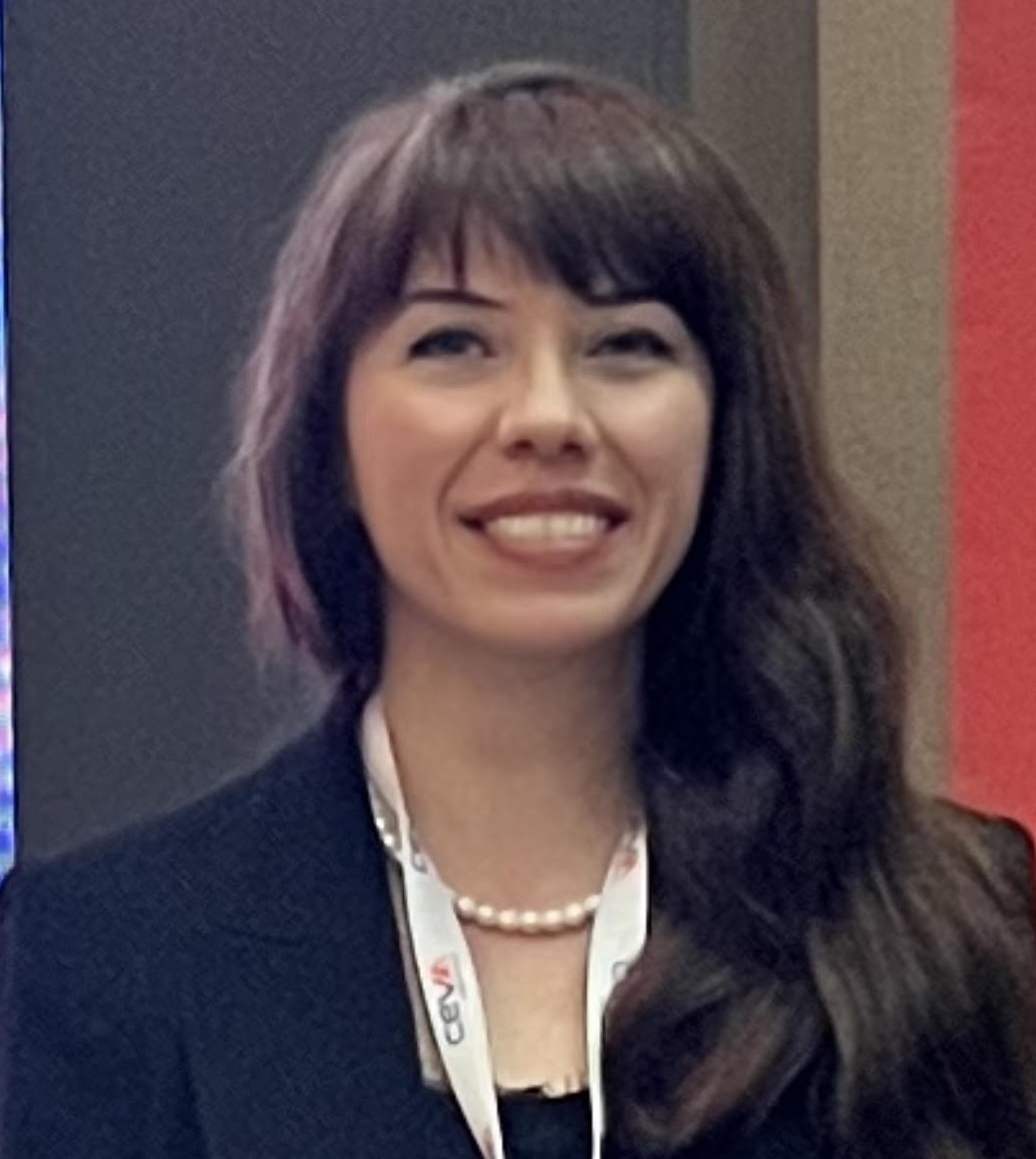
Title: The Effects of 3D Printing on Logistics Industry
Speaker Presentation
Ms. Esma Deniz YILMAZ
PhD Candidate, Department of Business Administration, Uludag University, Turkey
Abstract
In recent years, three-dimensional (3D) printers have brought about a revolutionary transformation in industries. The impact of this technology has also begun to be felt in the logistics sector, leading many international logistics companies to take strategic steps to adapt to this technology.
Thanks to 3D printers, which enable on-site and customized production of spare parts or products, inventory management, storage, and transportation processes that were traditionally time-consuming and costly can now be optimized, leading to cost reductions.
This article aims to examine the effects and potentials of 3D printers on the logistics sector in more detail. The conclusion of the article will reveal that 3D printers have the potential to significantly transform the logistics sector and provide businesses with a competitive advantage. However, overcoming certain barriers is necessary to fully realize the potential of this technology. This section will provide brief recommendations for companies operating in the logistics sector.
Biography
Esma Deniz YILMAZ has completed her MBA in Middlesex University Dubai Campus focusing on Logistics and Operations, her thesis was on 3D printers and Logistics. She now continues her PhD thesis on Industry 4.0 technologies and their effect on Logistics Industry in Uludağ University. She started her professional life in Dubai as logistics specialist and later as logistics supervisor in TWIPV, subsequently continued as Logistics Manager at Mavitec Turkiye. She now is working as Logistics Director at GMSS LTD, and simultaneously works as part time expert on Logistics related cases at regional courts in Türkiye. She is an active member of HLA (Humanitarian Logistics Association), Lions Club International, IAPHL (International Association of Public Health Logisticians), BUİKAD (Bursa Business Woman Association).
“ Will be updated soon...”
+91 9491 456 452
Door No.200, Immidhihalli Main Road, Whitefield-560066, Bangalore, India
About Us
Global Scientific Guild organizes conferences and webinars to promote quality research and real world impact in an atmosphere of true international co-operation between scientists, doctors, professors, practitioners, engineers and industry by bringing together the world class renowned personalities to discuss the latest developments and innovations at one common platform.